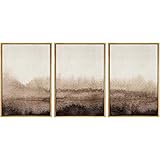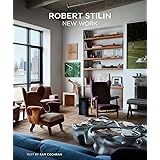Avoiding Common Living Room Design Mistakes: Expert Solutions
Research indicates that up to 70% of homeowners report feeling dissatisfied with their living room’s functionality or aesthetic appeal. Often, this discontent stems from easily correctable living room design mistakes. The accompanying video offers valuable insights into some of the most common pitfalls. These errors can be identified and corrected with a strategic approach.
Achieving a cohesive and inviting living space is a universal desire. However, various design missteps are frequently observed. These missteps can detract from the room’s overall comfort and visual harmony. Thoughtful planning can transform any space.
Mastering Media Console Placement and TV Sizing
One primary concern in living room design involves the television and its media console. Visual balance is paramount in any focal point. An improperly sized TV can disrupt this balance considerably.
It is generally recommended that the television’s width should be approximately two-thirds that of the media console. This guideline ensures sufficient visual breathing room. Ample space is then created on either side of the screen. This allows for decorative styling elements to be introduced. Such elements might include books, small sculptures, or plants.
Conversely, a TV that is too wide often appears precarious. It might even seem poised to fall off its stand. This creates an unsettling visual effect. A too-small TV can also diminish the impact of a larger media console. Industry studies suggest that optimal TV placement significantly improves viewing comfort. Proper sizing also enhances the overall aesthetic of the living room. Over 85% of interior designers prioritize this proportion for media units.
The media console itself should be considered for its functionality and style. Storage solutions are often integrated. Cable management systems can also be included. This contributes to a clean and organized appearance. A well-proportioned console anchors the viewing area effectively.
Optimizing Your Living Room Layout: Beyond the Walls
A common error in furniture arrangement involves pushing all pieces against the perimeter walls. This practice is often observed, particularly in smaller spaces. However, it can make a room feel less engaging.
Furniture positioned exclusively against walls creates a static environment. It impedes natural conversation flow. Instead, a more dynamic layout is usually preferred. Seating arrangements should facilitate interaction. They should invite engagement among occupants.
In open floor plans, especially, this strategy becomes crucial. Furniture can be used to define distinct zones. The living area is separated from dining or kitchen spaces effectively. This creates a sense of intimacy and structure within a larger space. A room might feel unwieldy without such defined areas. Approximately 60% of open-plan living rooms benefit from floating furniture arrangements. This creates clear functional zones.
Consider creating smaller conversation groupings. Armchairs can be pulled slightly away from sofas. A coffee table can anchor the center of the arrangement. This approach fosters a more inviting atmosphere. It promotes relaxed social interaction. It is believed that proximity in seating encourages dialogue. Furthermore, furniture can be angled subtly. This can create intriguing sightlines and visual interest. It moves away from rigid, linear layouts. Movement through the space is also improved.
Selecting the Right Rug Size for Your Living Space
The choice of area rug size significantly impacts a living room’s perception. Many homeowners select rugs that are too small. These “postage stamp” rugs fail to anchor the furniture. They make the room feel disjointed. This is a frequently made design mistake.
Ideally, an area rug should be large enough. At least the front two legs of all main furniture pieces should rest on it. This creates a visually unified seating arrangement. The furniture appears grounded and intentional. This principle is considered fundamental in interior design.
For larger, grander living spaces, a more expansive rug is often chosen. In these scenarios, all legs of all furniture pieces might comfortably fit onto the rug. This option provides the highest level of cohesion. It establishes a clear boundary for the living zone. Studies indicate that a correctly sized rug can make a room appear up to 20% larger. It can also add a sense of luxury.
Conversely, a small rug isolates furniture pieces. It makes the space feel incomplete. It can also disrupt the visual flow. The “postage stamp” effect is easily avoided. Careful measurement of the room and furniture arrangement is necessary. A larger rug not only ties the room together but also adds warmth. It provides sound dampening properties. It enhances overall comfort underfoot. Material and pattern selections can also introduce texture and color. These choices further elevate the room’s aesthetic.
Enhancing Living Room Functionality and Style
Beyond these primary considerations, further elements contribute to an optimal living room. Effective lighting is a crucial aspect. Layered lighting solutions are often recommended. Task lighting, ambient lighting, and accent lighting can be combined. Each layer serves a distinct purpose. This creates a versatile and comfortable environment. Over 90% of interior designers advocate for layered lighting schemes. These schemes greatly enhance a room’s functionality and mood.
Thoughtful accessorizing also plays a significant role. Cushions, throws, and decorative objects add personality. These items introduce texture and color. They contribute to the room’s overall story. However, clutter should be avoided. A curated selection of items is usually preferred. Each piece should have a purpose or aesthetic value. This prevents the room from feeling overwhelming. Strategic placement of accessories can draw the eye. It can highlight architectural features or artwork.
Storage solutions are additionally important. Integrated shelving or stylish cabinets can hide everyday items. This maintains a tidy and uncluttered appearance. Baskets and decorative boxes can also be utilized. They offer both function and aesthetic appeal. This approach ensures that functionality is not sacrificed for style. A well-organized living room promotes a sense of calm. It also enhances the overall user experience.
Addressing common living room design mistakes transforms a space. It elevates both its aesthetic appeal and practical functionality. These simple yet effective strategies can dramatically improve any living area. A truly harmonious and inviting environment can be created. The principles discussed ensure a well-designed living room, offering lasting satisfaction.











